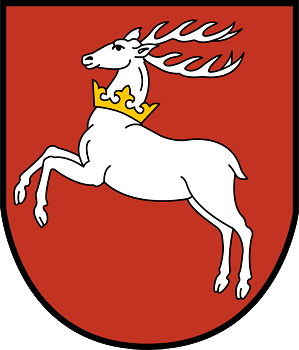Culture and sport
The cultural offer is abundant and diverse. In the region there is the oldest and at the same time the largest in this part of Poland Juliusz Osterwa Theatre, the only Music Theatre in Eastern Poland and the Philharmonic Orchestra. Lubelskie is also teeming with activities of alternative theatres, some of which are already world-known, for instance Gardzienice Centre for Theatre Practices, the Plastic Art Stage at the Catholic University of Lublin or the Provisorium Theatre.
More than 160 associations and foundations carry out their varied activities in the region and enrich the cultural life of Lubelskie by organising different reviews, competitions and festivals. We can also notice robust development of “little homelands”, as there are over 70 regional societies in the region. Lubelskie is a true hotbed of Polish folklore. Folk art is still alive and authentic. Thus, it is the city of Lublin that hosts the unique organisation of this kind in Europe – the Association of Folk Artists which covers the entire country. The region boasts some of the biggest events aimed at popularization of domestic folklore, including the Review of Folk Bands and Singers in Kazimierz Dolny, the National Convention of Polish Village Theatres in Tarnogród and Stoczek Łukowski, and meetings of blacksmiths in Wojciechów or potters in Urzędów. Moreover, many tremendous museums are located in the region, including the ones operated by the regional authorities: the Lublin Museum, Zamoyski Museum, Open-Air Museum in Lublin, Vistula River Museum, or institutions owned by the district and municipal bodies: Henryk Sienkiewicz Museum, Józef Ignacy Kraszewski Museum, Museum of the Chełm Land, Zamość Museum or the Museum of Southern Podlasie.[/vc_column_text][/vc_tta_section][vc_tta_section title=”Sport” tab_id=”1487325488948-f546dc44-f3af”][vc_gallery interval=”3″ images=”4425,4426,4427,4428,4429,4430,4431,4432″ img_size=”large” title=”Sports in the region”][vc_column_text]Sport is one of key elements of the social life in the Lubelskie Region. Almost one thousand sports clubs operate in the region, where over 110 thousand athletes practice different Olympic and non-Olympic sport disciplines. Regardless of typical professional sports, Lubelskie boasts robust development of local sports activities performed at universities, schools, in the countryside or by the disabled. The leading individual sports include wrestling, weight lifting, athletics, swimming, boxing and martial arts, whereas team sports are dominated by football, handball, basketball, rugby and table tennis. A bit older fans recall with fondness achievements of speedway riders from Lublin. Since 1970 the region has been home to Biała Podlaska Academy of Physical Education which prepares teachers and coaches for the sports needs of the region. Lubelskie is also a place with a well-developed infrastructure of sports facilities which support the development of sports and recreation, including the Aqua Lublin Olympic swimming pool or football stadiums in Lublin and Puławy.[/vc_column_text][/vc_tta_section][vc_tta_section title=”Education” tab_id=”1492508125765-69f87d67-ec0b”][vc_column_text]The Lubelskie Region is an important scientific centre on the map of Poland. Tradition of higher education dates back to 1594, when the Zamość Academy was established upon the initiative on Jan Zamoyski. The Jan Paul II Catholic University of Lublin is the oldest university in the region, and at the same time one of the oldest universities in Poland. It was established in 1918 upon the initiative of priest Idzi Radziszewski.
The biggest higher education institution in the region is the Maria Curie-Skłodowska University established in 1944 as a state university. It was organised by zoologist Prof. Henryk Raabe, who was also its first rector. As the university grew and developed, other academic entities became independent, namely the Medical University and the University of Life Sciences in Lublin.
In the capital city of the region there is also the Lublin University of Technology, which was established upon the initiative of communities of technicians, engineers and scientists in 1953.
The Polish Air Force Academy in Dęblin is yet another recognised entity, which is globally known as “the School of Eaglets”.
After the transition of 1989 higher education became more popular both in the region’s capital and in other cities of Lubelskie. Public academia were transformed into state higher vocational schools, e.g. in Biała Podlaska, Chełm and Zamość. Also private colleges grew rapidly, including the University College of Economy and Innovation or the University College of Entrepreneurship and Administration.[/vc_column_text][/vc_tta_section][/vc_tta_accordion][/vc_column][/vc_row]












 Oficjalny portal województwa lubelskiego prowadzony przez Urząd Marszałkowski Województwa Lubelskiego
Oficjalny portal województwa lubelskiego prowadzony przez Urząd Marszałkowski Województwa Lubelskiego